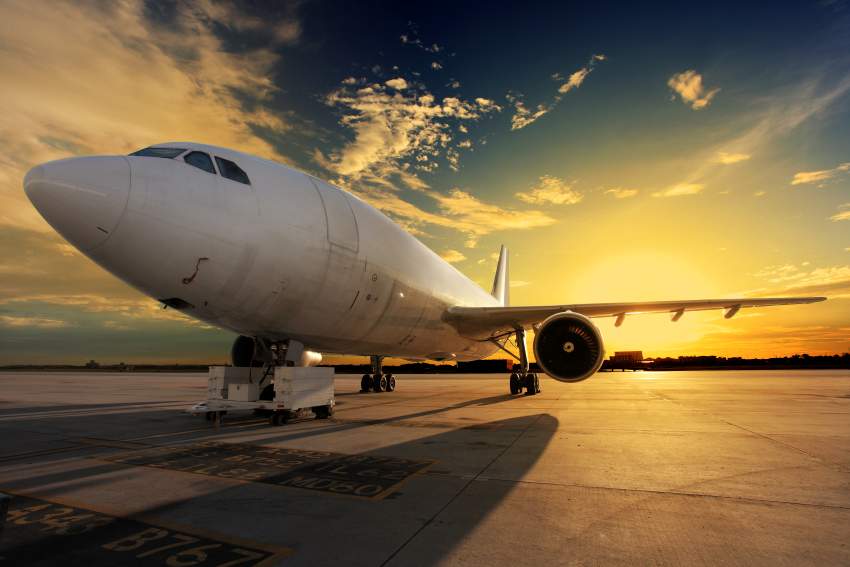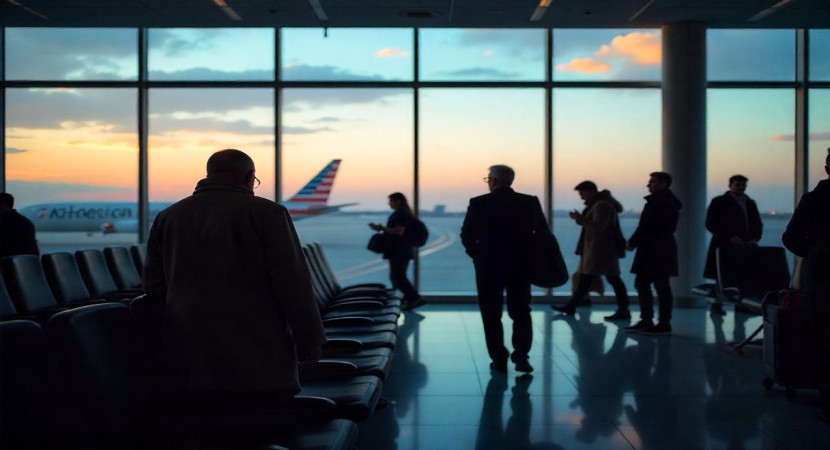American Airlines Flight Grounded After Baggage Cart Gets Lodged Under Jet's Tail, Plus Travel Chaos from Bears to Bonus Points Stir Passenger Tension - Travel And Tour World
Friday, June 27, 2025

An American Airlines flight was grounded. Yes, grounded—not for weather, not for tech failure, but because a baggage cart got lodged under the jet’s tail. It didn’t just tap the aircraft. It crashed, jammed, and stayed stuck. That’s right—an ordinary baggage cart brought a high-tech American Airlines jet to a standstill. And the grounding wasn’t quick to resolve.
Meanwhile, travel disruptions were erupting across the globe. A wild bear caused chaos on a Japanese runway. Flights were halted. Ground staff scrambled. But the bear stayed loose, hiding somewhere in the facility. No one knew when—or how—it would be caught. It was a disruption like no other.
As if that wasn’t enough, tension among passengers was rising from another direction. Bonus points and travel perks are stirring new debates. Airlines like American Airlines push new loyalty offers, but travelers are growing suspicious. Who really wins in these point games? Are passengers getting true value, or just clever distractions from ongoing issues?
Bears on runways. Baggage carts under tails. Bonus points triggering questions. The tension is growing. And American Airlines finds itself in the middle of it all—again.
The jet’s tail is a vulnerable point. When a baggage cart gets lodged under it, the aircraft can’t fly. So American Airlines had to ground the flight. This wasn’t just another delay. It was an operational embarrassment that passengers won’t soon forget.
While American Airlines tries to manage the fallout, travel disruptions continue. From wildlife on runways to corporate point battles, 2025 is quickly becoming a year of unusual aviation incidents. Passenger tension is rising. Tempers are flaring. Loyalty is thinning.
American Airlines flight grounded. Jet’s tail compromised. Bonus points questioned. Bears blocking runways. It sounds unbelievable—but it’s real.
And it all happened within days. Curious what went wrong? What went right? Or what comes next?
Keep reading. This isn’t just a travel update. It’s the unraveling of a high-stakes, high-altitude drama no flyer saw coming.
A routine flight turned into a major disruption for American Airlines this week after a baggage cart crashed into a parked aircraft, wedging itself beneath the tail and forcing an immediate grounding of the plane. The mechanical mishap brought another round of operational headaches to the airline giant, raising new questions about ground crew coordination and safety protocols across major U.S. airports.
As if one shocking disruption wasn’t enough, international chaos was unfolding at the same time. In Japan, an airport was forced to suspend all operations after a wild bear wandered onto the runway. Security scrambled to chase the animal, but despite repeated closures and vehicle patrols, the bear remained loose, triggering a travel stalemate that left passengers stranded and planes diverted.
These incidents aren’t isolated. They’re signs of an increasingly unpredictable travel ecosystem, where logistics and safety face constant tests—whether from failing equipment, roaming wildlife, or growing passenger dissatisfaction.
The American Airlines incident, though minor in visual damage, had major operational impact. Ground personnel lost control of a baggage cart, which crashed into the aircraft’s rear fuselage. The cart didn’t just collide—it became physically stuck under the tail of the jet, making takeoff impossible.
Ground crews struggled to remove the lodged equipment without causing further damage. The delay rippled across the airport’s daily operations, pushing back flight schedules and frustrating travelers already on tight itineraries.
This latest mishap shines a light on systemic issues plaguing American aviation: understaffed ground operations, limited oversight, and growing gaps in safety standards as airlines push for faster turnarounds. And for passengers, every grounded plane is another broken promise of reliability.
Thousands of miles away, another crisis was unfolding—only this time, it wasn’t human error. It was wildlife.
In Japan, an airport had to abruptly cancel flights after a bear was spotted roaming on the runway. Ground teams attempted to corral the animal using vehicles and barriers, but the bear evaded capture, disappearing somewhere within the facility grounds. This led to repeated runway closures and flight cancellations that impacted domestic and international travel alike.
The surreal standoff highlights a lesser-discussed travel threat: the vulnerability of even the most high-tech aviation systems to nature’s unpredictability. Wildlife incursions aren’t just theoretical—they can and do shut down global travel networks.
While operational disruptions dominate headlines, loyalty programs are still battling it out behind the scenes.
Mesa Airlines launched a limited-time offer for select cardholders: spend $7,000 by September 30 to earn a massive 52,025 bonus points. For frequent flyers and strategic spenders, this deal is gold—especially for those leveraging recurring bills like mortgage payments to maximize return.
At the same time, Bilt is preparing a Rent Day splash on July 1, offering up to a 100% bonus on gift card redemptions based on loyalty tier. The company is even giving away free pigs in blankets at its New York headquarters, adding quirky flair to its member engagement strategy.
But under the surface, these offers point to something deeper: the growing pressure on loyalty programs to retain travelers in a crowded rewards landscape. Customers are no longer easily impressed. They expect value, transparency, and tangible benefits.
Onboard, American Airlines is trying to shift the narrative. Their new tapas box—recently introduced on select flights—is getting a cautious thumbs-up from some travelers. Packed with diverse snacks and finger foods, it’s a rare attempt at quality in a sea of subpar airline meals.
But critics remain skeptical, especially after recent feedback on the beef sandwich option, which has been described as soggy and inconsistent across flights. Food upgrades may please some, but for many, they feel too little too late.
Meanwhile, American has introduced new onboard announcements reminding passengers that headphones are required for personal device usage. It’s a move aimed at reducing cabin noise—but oddly, these rules don’t seem to apply in lounges, where complaints about loud videos and phone calls persist. The inconsistent enforcement reflects a broader customer service challenge: creating a travel experience that feels seamless, respectful, and consistently enforced.
These seemingly disconnected events—ground mishaps, wildlife incursions, rewards wars, and snack reviews—are all pieces of a larger puzzle. They illustrate the travel industry’s tightrope walk between progress and chaos.
Operational flaws can no longer be brushed off as rare. Whether it’s a runaway baggage cart or a bear on the tarmac, these events disrupt lives, challenge reputations, and cost airlines millions in delays and logistics.
Loyalty programs, meanwhile, are morphing from perks to power plays. The companies that win are the ones listening to what travelers actually want—flexibility, personalization, and authenticity.
In-flight experiences, once a centerpiece of brand identity, now fluctuate wildly depending on routes and staffing. A good snack can be a bright spot, but inconsistent quality erodes trust over time.
And amid it all, passengers are becoming more vocal, more empowered, and more discerning. They are sharing their stories, posting videos, and demanding better—on every channel, every day.
2025 is shaping up to be a defining year for aviation and hospitality. Between operational slip-ups, bizarre disruptions, and brand loyalty battles, one message is clear: the industry can’t afford to take travelers for granted.
Airlines must tighten their operations. Airports must plan for the unexpected. And loyalty programs must deliver more than marketing fluff—they must deliver actual value.
The world is flying again. But the expectations are higher than ever. Those who rise to meet them will soar. Those who don’t may find themselves stuck—like a baggage cart beneath a tail.












